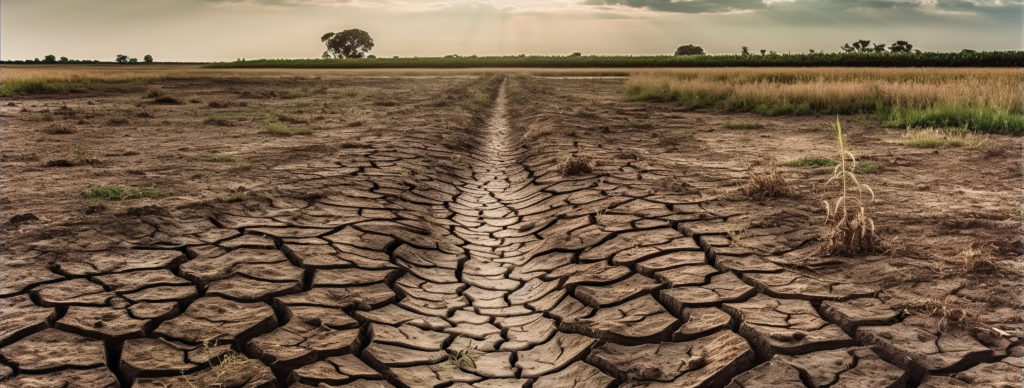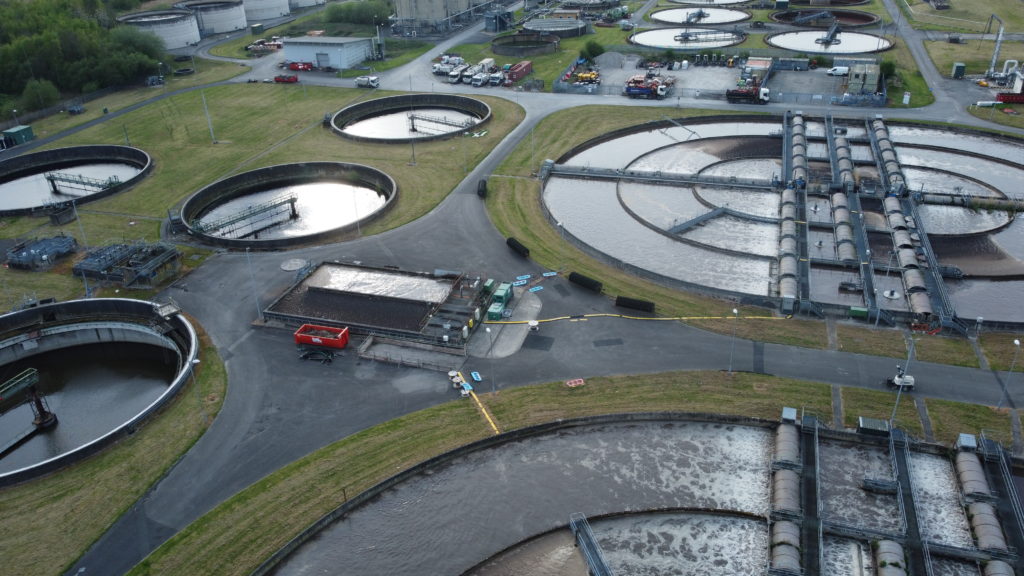Industries, farms, and citizens in Europe are experiencing disrupted water supplies due to the climate crisis. New, sustainable, and efficient approaches are needed, backed by ambitious legislation.
This summer, droughts in the Western Mediterranean raised concerns about reduced soil moisture, river flows, and lower crop yields. Italy also saw deadly flooding as torrential rains hit parched ground. While the EU-funded Copernicus monitoring service shows much of this area no longer under drought warnings, data from July put much of northern, central and eastern Europe under these.
In 2018, the European Environment Agency warned of water stress in one-third of EU territory and heightened flooding and drought risks in many European regions. Changing precipitation patterns exacerbated wetness in some areas and intensified aridity in others. “Water scarcity is one of the challenges we face,” says Oliver Loebel, Secretary-General of EurEau. “There are two components: overall declining precipitation and longer drought periods interrupted by heavy rainfall,” he explains, adding that rising sea levels also risk saltwater intrusion in aquifers.
However, despite the risks posed to Europe’s agriculture, industry, and citizens, a gap exists between the scale of the issue and the implemented measures and legislation. “The EU has struggled with water availability for over a decade but is only now confronting this challenge,” says Loïc Charpentier from Water Europe. This organisation unites major water users, municipalities, research centres, and others to enhance the water sector and address global challenges. “The central problem we currently face is that water remains under the policymakers’ radar,” he adds.
For a comprehensive solution, society’s water consumption practices need to be reevaluated. According to a European Commission spokesperson, measures include sustainable water use and reuse, soil management, vegetation cover, and restoring damaged areas. Furthermore, Europeans would need to prepare for disruptions in freight transport, hydropower, and cooling for power plants and promote residential water conservation and additional infrastructure for water supply and storage.

Europe water scarcity - EU law sufficient but poorly enforced
Since 2000, Europe has implemented the Water Framework Directive. This policy primarily focuses on water health, including pollution levels, and requires EU countries to formulate and implement river basin management plans.
According to the Commission spokesperson, legislation is the EU’s primary tool to reverse water scarcity. However, Brussels mostly has a say in water quality, not quantity. Alongside this, while the European Commission deemed the legislation sufficient during its review in 2019, the Commission said there was “room for improvement” around implementation and investment.
“When it comes to implementation and enforcement, a lot of the business-as-usual approaches are still being applied, rather than using the Water Framework Directive for that paradigm shift,” says Sergiy Moroz, policy manager for biodiversity and water at the NGO European Environmental Bureau. “We need the funding and the political will to implement it properly,” he adds.
Meanwhile, attempts to incorporate water efficiency into EU policy have fallen short. For instance, in July, European Parliament lawmakers voted to weaken water efficiency provisions in the Industrial Emissions Directive, a law still awaiting finalisation.
Additionally, Brussels has regulations on water reuse. Still, they are limited to agriculture, even though industry consumes half of all sectoral freshwater in Europe, according to the UN Food and Agriculture Organization’s Aquastat.
Water reuse in industry
Jurgita Malinauskaite, the head of Brunel Law School, suggests that European businesses need to rethink their strategies and transition to a circular model. “We need to carefully consider how to save fresh water and how to reclaim, reuse, and recycle wastewater while applying circular economy principles. This is currently missing, and I think all industries need to rethink their business models,” says Malinauskaite.
There are already initiatives working on this in Europe. For example, a project funded by the EU called iWays is exploring methods to recover water, materials, and heat in industrial processes. This initiative could yield numerous benefits, such as reducing freshwater consumption by 30% to 60%. Additionally, combining solar power with farming could alleviate pressure on land, provide shade for animals and crops, and help conserve water.
Projects by the energy company BayWa r.e are already exploring the integration of energy production and rainwater harvesting. The company is also investigating floating solar installations, where panels are positioned over lakes to optimise land usage and mitigate evaporation. It is believed that this approach could potentially reduce lake evaporation rates by 30-60%.

Reassessing water use in Europe to combat water scarcity
In the face of growing uncertainty and changing water patterns, Europe needs to approach water more circularly, tackling pollution issues and increasing work on reusing supplies. While the European Environment Agency found that improvements in efficiency and management have resulted in a 19% drop in water abstraction since 1990, some argue there needs to be a significant shift in how Europe views water.
“There is no way we can continue our paradigm of increasing the supply all the time,” said Moroz, adding that building desalination plants is costly. “We have to start dealing with managing the demand, being more efficient, reducing the amount of water we need and restoring and maintaining the natural base where the water is coming from,” he adds.
Ecosystems can help regulate water, including flood plains, that act as a sponge and reduce the impact of flooding, provided they are in good condition. Here, the draft Nature Restoration Law could help as it looks at restoring degraded ecosystems, aiming for all degraded areas to be under protection and restoration measures by mid-century. However, like the Water Framework Directive, this depends on proper implementation by EU countries.
Europe also needs to look at where and how it produces food, said Loebel. “We need to rethink which crops we can grow where and whether it makes sense to have agriculture in certain areas, with all the social consequences. I know it’s not easy, but the question cannot be avoided,” he adds. There is concern about the impact of irrigation in some areas.
For instance, in the Doñana region in Spain, while some irrigation is allowed, many farmers use illegal wells to drain underwater reserves, with the central government closing 220 illegal wells in one week, according to Reuters. Alongside this, local government plans to loosen irrigation rules further drew concern following prolonged drought in the area.
Closer cooperation in the future
While there is increasing competition between water users, there is also cooperation. This is mostly through voluntary exchanges, but Loebel thinks there is a willingness to do more, partly driven by worries over water supplies. “Scarcity, in a way, is a national problem, but it becomes a bigger issue when the river basin stretches across several countries. In those situations, it just makes sense to set up a rule where everyone has to work together to share the limited water fairly, whether you’re upstream or downstream,” he says, suggesting Brussels could do this.
The current European Commission is winding up ahead of the EU elections in 2024. Still, Charpentier advocates for a water- smart strategy in the next Commission mandate that would improve water security, resilience, and sustainability.
Originally published in Smart Water Magazine. Written by Kira Taylor, freelance journalist specialising in European energy, climate, and environment news.
If you’re interested in learning the technology iWAYS is using to recover and reuse water in industries, this resource will be helpful.